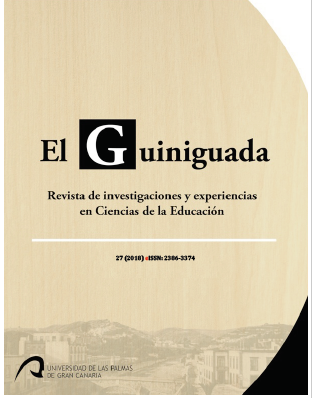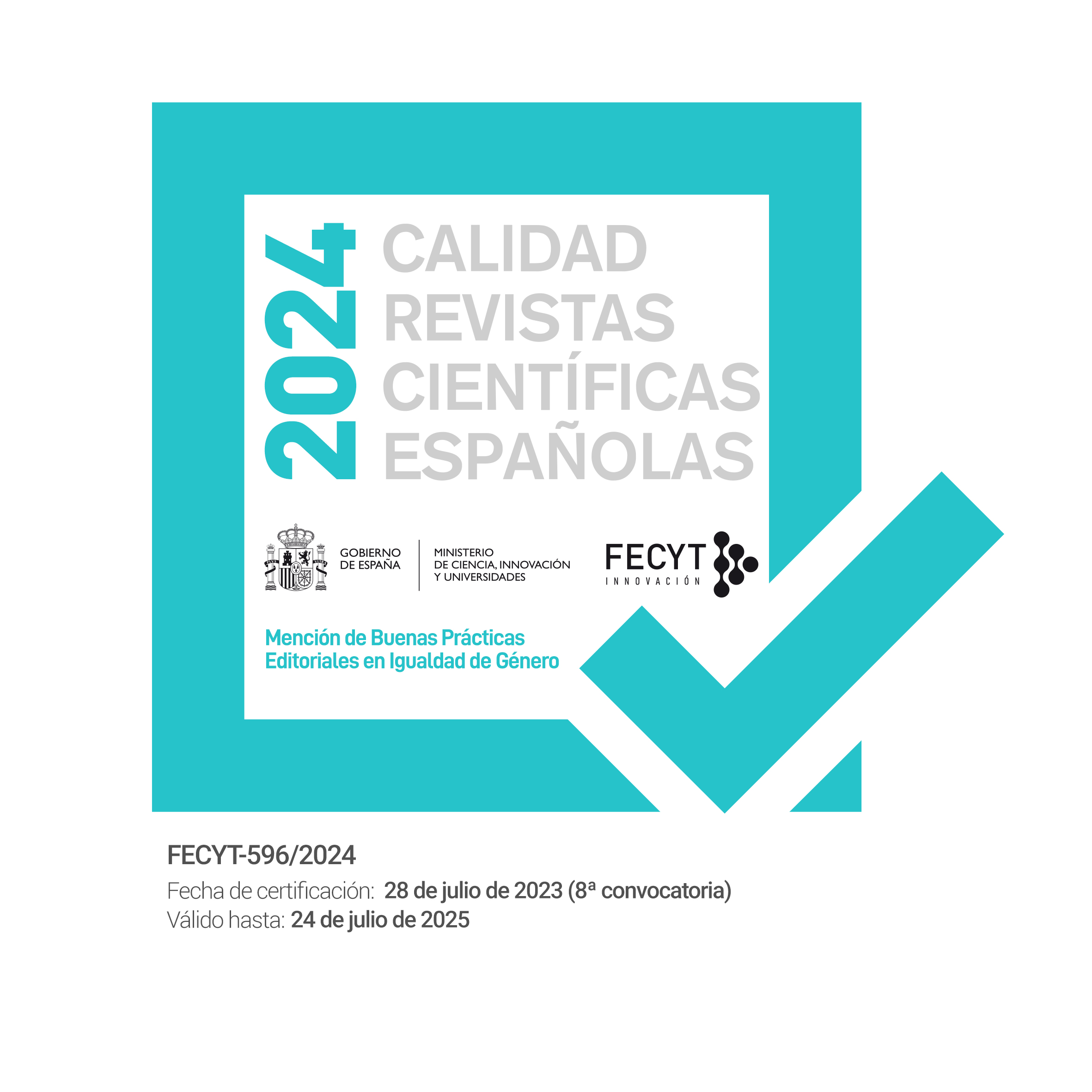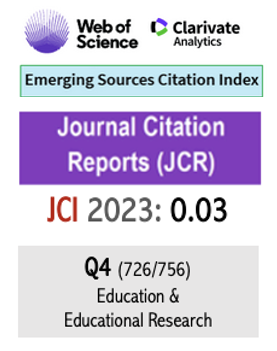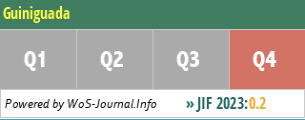Innovación metodológica para la tutorización de Trabajos Fin de Grado (TFG): los minivídeos para la tutoría semipresencial entre iguales como recurso en la praxis docente. Methodological innovation for the supervision of Final Degree Dissertations: mini-videos for blended peer-tutoring as a resource for teaching practice. doi 10.20420/ElGuiniguada.2018.205
Keywords:
Trabajo Fin de Grado (TFG), tutoría semipresencial, competencias, innovación docenteAbstract
En este artículo se describe el proceso de innovación metodológica para la tutorización de los Trabajos Fin de Grado (TFG) mediante la tutoría semipresencial. La elaboración y la defensa del TFG supone la demostración para el alumnado de la adquisición de una serie identificada de competencias académicas, inter/personales y profesionales. El uso de una serie estructurada de minivídeos, creados como apoyo al alumnado de 4º curso de Educación Primaria, ha supuesto un avance sustancial en la consecución final de esta tarea que, para la mayoría del alumnado supone un reto de carácter académico y personal dada su complejidad. El proceso de innovación metodológica que aquí se describe aporta demostrados beneficios que discutiremos en relación a los resultados académicos del alumnado participante sobre la escritura y la defensa de sus TFG.
Downloads
References
Alzate, G.M. y Peña, L.B. (2009). La tutoría entre iguales: una modalidad para el desarrollo de la escritura en educación superior. Universitas Psychologica, 9(1), 123-138.
Arco, J.L. y Fernández, F.D. (2011). Eficacia de un programa de tutoría entre iguales para la mejora de los hábitos de estudio del alumnado universitario. Revista de Psicodidáctica, 16(1), 163-180.
Cano, M.ª E. (2008). La evaluación por competencias en la educación superior. Profesorado. Revista de Currículum y Formación de Profesorado, 12(3), 1–16.
De Smet, M., Van Keer, H. y Valcke, M. (2008). Blending asynchronous discussion groups and peer tutoring in higher education: An exploratory study of online peer tutoring behaviour. Computers & Education, 50, 207–233. doi:10.1016/j.compedu.2006.05.00
Falchikov, N. (2001). Learning Together. Peer tutoring in higher education. London: Routledge.
Gómez, M.ª E. (2017). Redacción de textos académicos y expresión oral en inglés. En M.ª I. Amor y R. Serrano (Coords.), Guía práctica para el trabajo de fin de grado en Educación, (pp. 51–67). Barcelona: Graó.
Graham, C.R. (2006). Blended learning systems: Definition, current trends, and future directions. En C.J. Bonk y C.R. Graham (Eds.), Handbook of blended learning: Global perspectives, local designs, (pp. 3–21). San Francisco: Pfeiffer Publishing.
Graham, C.R. (2013). Emerging practice and research in blended learning. En M.G. Moore (Ed.), Handbook of distance education, (3ª Ed., pp. 333–350). Nueva York: Routledge.
Halverson, L.R., Spring, K.J., Huyett, S., Henrie, C.R. y Graham, Ch.R. (2017). Blended Learning Research in Higher Education and K-12 Settings. En M.J. Spektor, B. Lockee y M.D. Childress, Learning, Design and Technology. An International Compendium of Theory, Research, Practice, and Policy, (pp. 1–30). Berlín: Springer.
Hertz, B., Kerkhof, P. y van Woerkum, C. (2016). PowerPoint Slides as Speaking Notes: The Influence of Speaking Anxiety on the Use of Text on Slides. Business and Professional Communication Quarterly, 1–12. DOI: 10.1177/2329490615620416.
Jiménez, A. (2009). Reflexiones sobre la necesidad de acercamiento entre universidad y mercado laboral. Revista Iberoamericana de Educación, 50, 1–25. Recuperado de https://goo.gl/iE7S58 [Consultado el 28 de septiembre de 2017].
Morales, P. (1995). Cuadernos del ICE. Núm. 3. Tipos de pruebas: los exámenes orales y las preguntas de respuesta abierta. Bilbao: Universidad de Deusto.
Moreno, R. (2017). Nuevos retos en la educación superior y la transferencia del conocimiento: Una metáfora para la ósmosis científico-social / New challenges in higher education and knowledge transfer: A metaphor for scientific-social osmosis. Revista Internacional de Aprendizaje en la Educación Superior, 4(1). Recuperado de https://goo.gl/LRe7ng [Consultado el 28 de septiembre de 2017].
Romero, M.ª A. (2017). European Higher Education Area-Driven Educational Innovation. Procedia, Social and Behavioral Sciences, 237, 1505-1512.
Salinas, B. y Cotillas, C. (2007). La evaluación de los estudiantes en la Educación Superior. Apuntes de buenas prácticas. Valencia: Servei de Formació Permanent - Universitat de València.
Topping, K.J. (1996). The effectiveness of peer tutoring in further and higher education: A typology and review of the literature. Higher Education, 32(3), 321–345.
Valdebenito, V. y Durán, D. (2013). La tutoría entre iguales como un potente recurso de aprendizaje entre alumnos: efectos, Fuidez y comprensión lectora. Perspectiva Educacional, 52(2), 154-176. DOI: 10.4151/07189729.
Vázquez, S. y López, S. (2016). Escuela, TIC e innovación educativa. School, ICT and teaching innovation. digitalEDUCATION, 30, 248–261.
Vermunt, J.D. y Donche, D. (2017). A Learning Patterns Perspective on Student Learning in Higher Education: State of the Art and Moving Forward. Educ Psychol Rev, 29, 269–299.
Published
How to Cite
Issue
Section
License
Authors who publish with this journal agree to the following terms:
- Authors retain copyright and grant the journal right of first publication with the work simultaneously licensed under a Creative Commons Attribution License that allows others to share the work with an acknowledgement of the work's authorship and initial publication in this journal. You can not make a commercial use of the work. The use derived from the work is also not allowed.
- Authors are able to enter into separate, additional contractual arrangements for the non-exclusive distribution of the journal's published version of the work (e.g., post it to an institutional repository or publish it in a book), with an acknowledgement of its initial publication in this journal.
- Authors are permitted and encouraged to post their work online (e.g., in institutional repositories or on their website) prior to and during the submission process, as it can lead to productive exchanges, as well as earlier and greater citation of published work (See The Effect of Open Access).

















